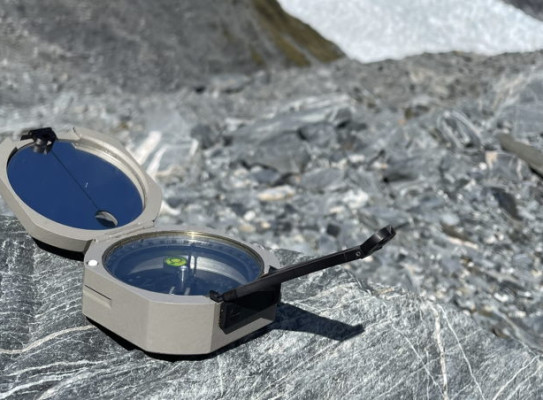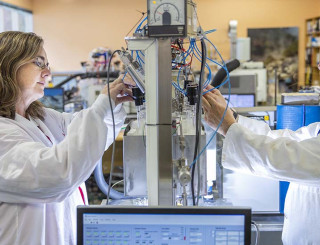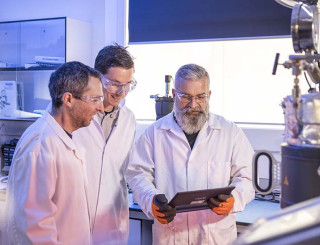Research on understanding our mineral systems and deposits

At GNS Science we undertake research to assist explorers in understanding mineral systems, locating mineral deposits, developing cutting-edge extraction and processing methodologies, and utilising minerals in the latest material and technology sciences.
Geological Mapping
To assist in the exploration process we provide detailed geological maps developed over decades of ground-based investigation as well and remote sensing data such as geophysics, satellite imagery, and LiDAR terrain mapping. These maps provide the basis for the terranes where many of our mineral deposits are found and the geological process that formed them. We also maintain databases of rock petrology and geochronology (Petlab) and mineral occurrences (GERM).
Geophysical Surveys
Defining the lateral and vertical extent of mineralised systems concealed beneath thick weathering profiles or sedimentary cover remains a fundamental challenge in mineral exploration. Integrated geophysical surveys, combined with quantitative rock property data and high-resolution geological mapping, provide a cost-effective means of constructing three-dimensional models of prospective terranes. Our team has extensive expertise across a wide spectrum of geophysical methods, ranging from deep crustal imaging that constrains the architecture and roots of mineral systems, to detailed forward and inverse modelling of specific deposits. Leveraging Earth Science New Zealand’s established capability in geothermal and hydro-geophysical investigations, we support the design, acquisition, and interpretation of both airborne and ground-based surveys, including gravity, magnetotelluric (MT), magnetic, and electromagnetic (EM) datasets. The Petlab database provides one of New Zealand’s most comprehensive repositories of physical rock property measurements, offering a critical framework for calibrating geophysical models and refining subsurface interpretations.
Unlocking Critical Minerals from Geothermal Fluids
At GNS Science’s Experimental Geochemistry Laboratory in Taupō, researchers are exploring how elements like lithium, cesium, and rare earth elements are released from rocks and carried by geothermal fluids. By recreating conditions from warm surface waters to super-hot systems above 400 °C, we’re uncovering how these valuable metals become concentrated in nature. This knowledge supports the development of new, sustainable methods for recovering critical minerals directly from geothermal systems, utilising New Zealand-sourced materials and international partnerships, including collaboration with the University of Oxford on rare earth recovery from volcanic environments.
Decoding the Fluids that Form Ore Deposits
Our minerals team applies decades of experience to understand how metals are mobilised and concentrated in the Earth’s crust. Using advanced stable isotope and fluid inclusion techniques, we uncover the sources, pathways, and evolution of the fluids that form ore deposits. Our Stable Isotope Laboratory is world-class, providing precise measurements of hydrogen, carbon, sulphur, oxygen, and nitrogen isotopes in minerals and fluids. These data reveal the origin of mineralising fluids and help define the temperature and redox conditions under which metals are deposited. By integrating isotope results with mineral chemistry and petrography, our scientists develop detailed models that explain how mineral systems evolve, from shallow geothermal environments to deep-seated magmatic systems. This expertise supports exploration for a wide range of critical and precious metal deposits, including epithermal and orogenic gold, porphyry, and volcanogenic massive sulphide systems, both in New Zealand and globally.
Prospectivity modelling
New Zealand’s critical mineral prospectivity is assessed using a mineral systems approach, which identifies geological processes that form mineral deposits and translates these processes into mappable criteria. While detailed datasets are lacking for some regions, this knowledge-driven approach helps identify areas with potential for critical mineral deposits.
Materials from Minerals
Our materials team transforms minerals into high-performance, functional materials using a range of physical, chemical, and thermal processing techniques. Advanced analytical methods are then applied to determine the magnetic, electronic, thermal, and mechanical properties of these materials. Based on this in-depth understanding, we design and prototype new energy technologies, including inductive power transfer components, insulation materials, and catalysts for hydrogen production. We rely on substantial in-house capability while also leveraging a robust network of domestic and international collaborators.

Stable Isotope Laboratory Stable Isotope Laboratory

